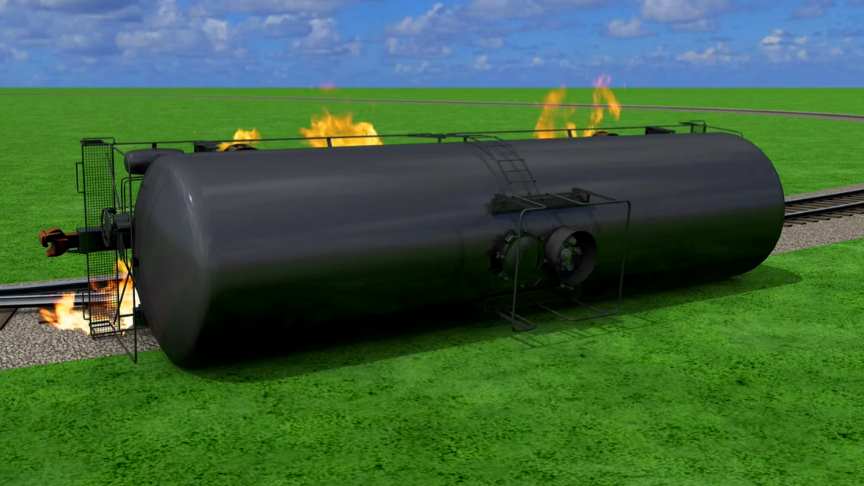As the world’s leading producer of oil and natural gas the United States relies on its vast rail system to efficiently and cost effectively move crude oil – 99.99% delivered without incident.Increased use of the rail system has heightened safety and environmental awareness in the tank car industry. New structural standards help prevent puncture in the event of an accident and advanced pressure valve technologies have also been added to create today’s modern tank car.
source/image(PrtSc): Spill Prevention
Many variants exist due to the wide variety of liquids and gases transported. Tank cars can be pressurized or non-pressurized, insulated or non-insulated, and designed for single or multiple commodities. Non-pressurized cars have various fittings on the top and may have fittings on the bottom. Some of the top fittings are covered by a protective housing. Pressurized cars have a pressure plate, with all fittings, and a cylindrical protective housing at the top. Loading and unloading are done through the protective housing./ wikipedia
Tank cars are specialized pieces of equipment. As an example, the interior of the car may be lined with a material, such as glass, or other specialized coatings to isolate the tank contents from the tank shell. Care is taken to ensure that tank contents are compatible with tank construction.As a result of this specialization, tank cars have generally been “one-way” cars.
Advertisement
Other cars, like boxcars, can easily be reloaded with other goods for the return trip. Combinations of the two types were attempted, such as boxcars with fluid tanks slung beneath the floors. While the car could certainly carry a load in both directions, the limited tank size made this unsuccessful.All tank cars operating throughout North America today feature AAR TypeE double shelf couplers that are designed to prevent disengaging in event of an accident or derailment.via/read more: wikipedia











